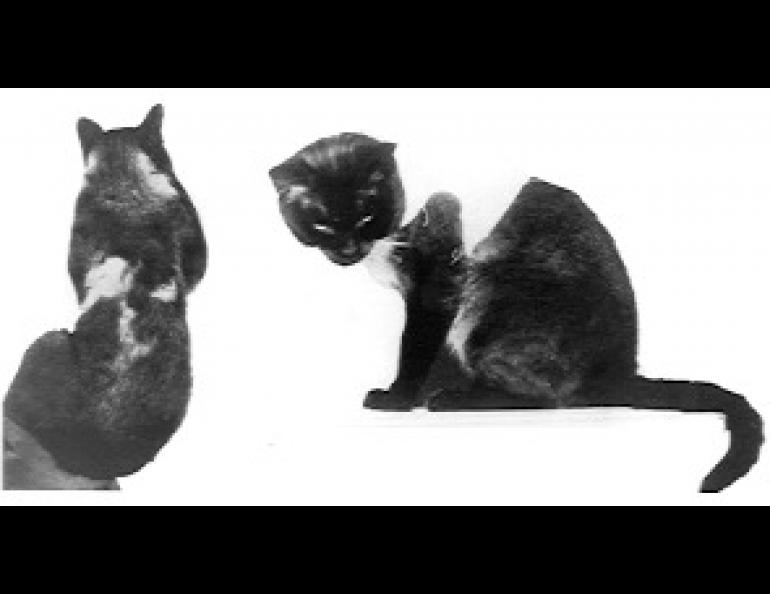
We are Siamese if you Please
In the genetic code of Siamese cats, Himalayan rabbits, and certain mice lies a mutant gene that produces the special pattern of color in these animals. Not only does this gene restrict color to areas which are cooler than normal, it affects the organization of the brain as well.
The Siamese gene is thought to be one of a series of genes, called the albino series, that participate in the formation of melanin pigment. In its normal form, which is completely dominant over all of its other forms, it allows full expression of whatever genes for color the animal may possess. In its most recessive form, the albino gene, no melanin-type pigments can be formed in the pigment-generating cells. An animal or person with two albino genes will have white or light reddish hair, pink or red eyes, and a white to yellowish skin which will appear pinkish due to the blood showing through. (Some color will remain from other, non-melanin pigments such as the hemoglobin in the blood, especially in individuals whose normal pigment would be very dark.)
Some intermediate forms of the albino gene prevent the synthesis of phaeomelanin (red-yellow melanin) and variably lighten the color of eumelanin (black and chocolate brown melanin) . The "albino" tigers seen in some zoos, with brownish stripes on a white body, are due to this type of "chinchilla" gene, which is recessive to full color but dominant to albino.
The Siamese or Himalayan gene is recessive to chinchilla and to full color but dominant to albino. It is unusual in that it can only produce pigment at temperatures below normal body temperature for mammals. Thus the body coat of a cat with two Siamese genes is very light in color, as the Siamese process of melanin production is very inefficient at the normal skin temperature of the trunk. The legs, ears, face and tail, however, normally have skin temperatures several degrees colder than does the central body. These areas can and do produce whatever pigment the other color genes carried by the cat permit at only slightly less than normal intensity. An ordinary seal-point Siamese, for instance, is genetically black, while a chocolate-point has brown genes similar to those in a chocolate Labrador.
One result of this is apparent to people with Siamese pets that get into fights and spend time outdoors in the colder months of the year. If a Siamese cat loses a tuft of fur from the body in cold weather, the skin where the fur is missing will be much colder than normal until the new fur grows back, and the outer part of the replacement fur will match the legs and face rather than the normal body coat.
Coat color isn't the only thing affected by the more recessive members of the albino family of genes. Siamese cats have a reputation for being cross-eyed, and the peculiar organization of their visual nervous system may be the reason. In a normal cat, nerves from each eye go to both sides of the brain. In a cat with two Siamese genes, the nerves from the right eye go primarily to the left side of the brain, and those from the left eye go primarily to the right side of the brain. This anomaly probably causes the cross-eyed appearance of many Siamese cats. Judging from their jumping performance, however, their depth perception is good, so they are somehow compensating for their abnormality.
Related information is available on banded (agouti) hair , overdominant dilution genes , and white spotting in domesticated animals .





